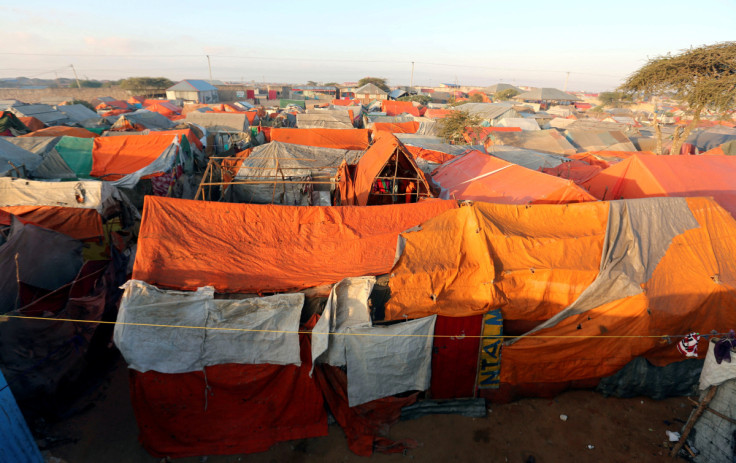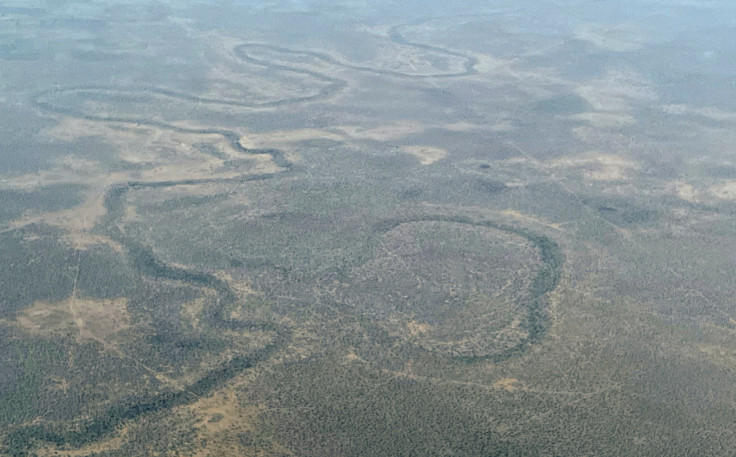Children Dying In Somalia As Food Catastrophe Worsens

More than 200,000 Somalis are suffering catastrophic food shortages and many are dying of hunger, with that number set to rise to over 700,000 next year, according to an analysis by an alliance of U.N. agencies and aid groups.
The Integrated Food Security Phase Classification (IPC), which sets the global standard for determining the severity of food crises, said its most acute level, "IPC Phase 5 Famine", had been temporarily averted but things were getting worse.
"They have kept famine outside of the door but nobody knows for how much longer," said Jens Laerke, spokesperson of the U.N. humanitarian office (OCHA).
"That people are dying from hunger, there's no doubt about it, but I cannot put a number on it," he told a news briefing in Geneva after the latest IPC analysis on Somalia came out.
A two-year drought has decimated crops and livestock across Horn of Africa nations, while the price of food imports has soared because of the war in Ukraine.
In Somalia, where 3 million people have been driven from their homes by conflict or drought, the crisis is compounded by a long-running Islamist insurgency that has hampered humanitarian access to some areas.
The IPC had previously warned that areas of Somalia were at risk of reaching famine levels, but the response by humanitarian organisations and local communities had staved that off.
"The underlying crisis however has not improved and even more appalling outcomes are only temporarily averted. Prolonged extreme conditions have resulted in massive population displacement and excess cumulative deaths," it said.
Somalia's last famine, in 2011, killed a quarter of a million people, half of them before famine was officially declared.
Fearful of a similar or even worse outcome this time, humanitarian chiefs were quick to say the situation was already catastrophic for many Somalis.
'STOP WAITING'
"I have sat with women and children who have shown me mounds next to their tent in a displaced camp where they buried their two- and three-year-olds," said James Elder, spokesperson of the U.N. children's charity UNICEF, at the Geneva briefing.
"Whilst a famine declaration remains important because the world should be past this, we also do know that children are dying now."
The IPC Acute Food Insecurity scale has a complex set of technical criteria by which the severity of crises are measured. Its Phase 5 has two levels, Catastrophe and Famine.
The Somalia analysis found that 214,000 people were classified in Catastrophe and that number was expected to rise to 727,000 from April, 2023 as humanitarian funding dropped off.
Catastrophe is summarised on the IPC website as a situation where starvation, death, destitution and extremely critical acute malnutrition levels are evident.
It said famine was projected from April onwards among agropastoral populations in the districts of Baidoa and Burhakaba, in central Somalia, and among displaced populations in Baidoa town and the capital Mogadishu.
The IPC data showed 5.6 million Somalis were classified in Crisis or worse (Phase 3 or above) and that number would rise from April to 8.3 million -- about half the country's population.
The OCHA is appealing for $2.3 billion to respond to the crisis in Somalia, of which it has so far received $1.3 billion, or 55.2%.
David Miliband, head of aid group the International Rescue Committee, said the underfunding of the appeal showed the world was not treating this as an urgent moment.
"The time for action is now in Somalia," he told Reuters in an interview, adding that what happened in 2011 should serve as a warning. "Stop waiting for the famine declaration," he said.

© Copyright Thomson Reuters 2025. All rights reserved.





















